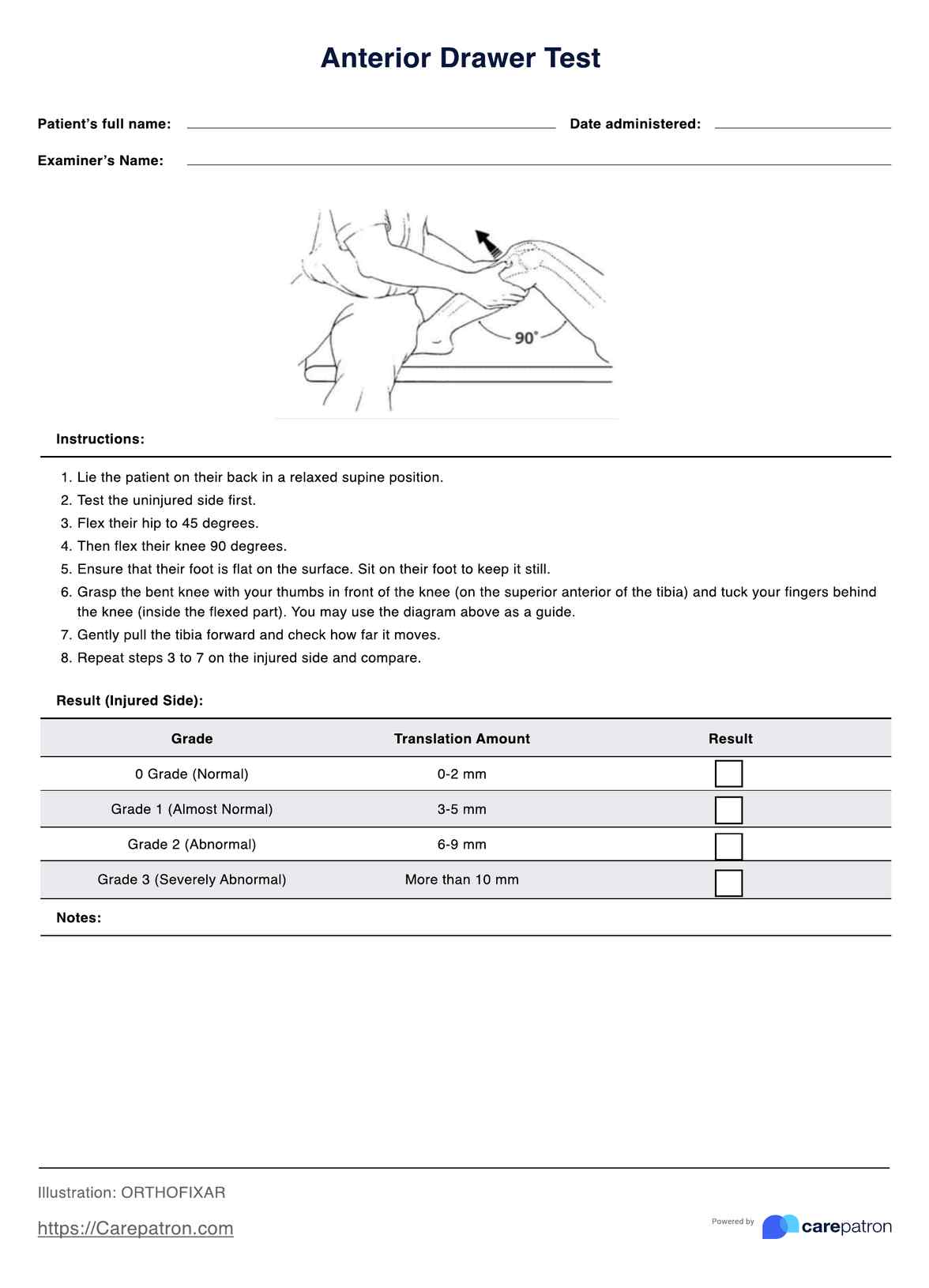It means that their ACL’s integrity is compromised and may be sprained or torn.

Anterior Drawer Tests
Utilize this Anterior Drawer Test template to determine if your patient has a sprained or torn ACL. Click here for a copy and a guide on how to use it!
Anterior Drawer Tests Template
Commonly asked questions
Scoring is as easy as ticking the checkbox with the description that matches your observed translational amount. For more information on scoring the Anterior Drawer test, you may refer to the “Scoring” section above.
A few of the benefits are that it’s reliable, it doesn’t require much equipment and one can obtain results within a few minutes. Feel free to head to the “Benefits of these free Anterior Drawer Test Templates” section for more benefits of using this test and its template.
EHR and practice management software
Get started for free
*No credit card required
Free
$0/usd
Unlimited clients
Telehealth
1GB of storage
Client portal text
Automated billing and online payments











